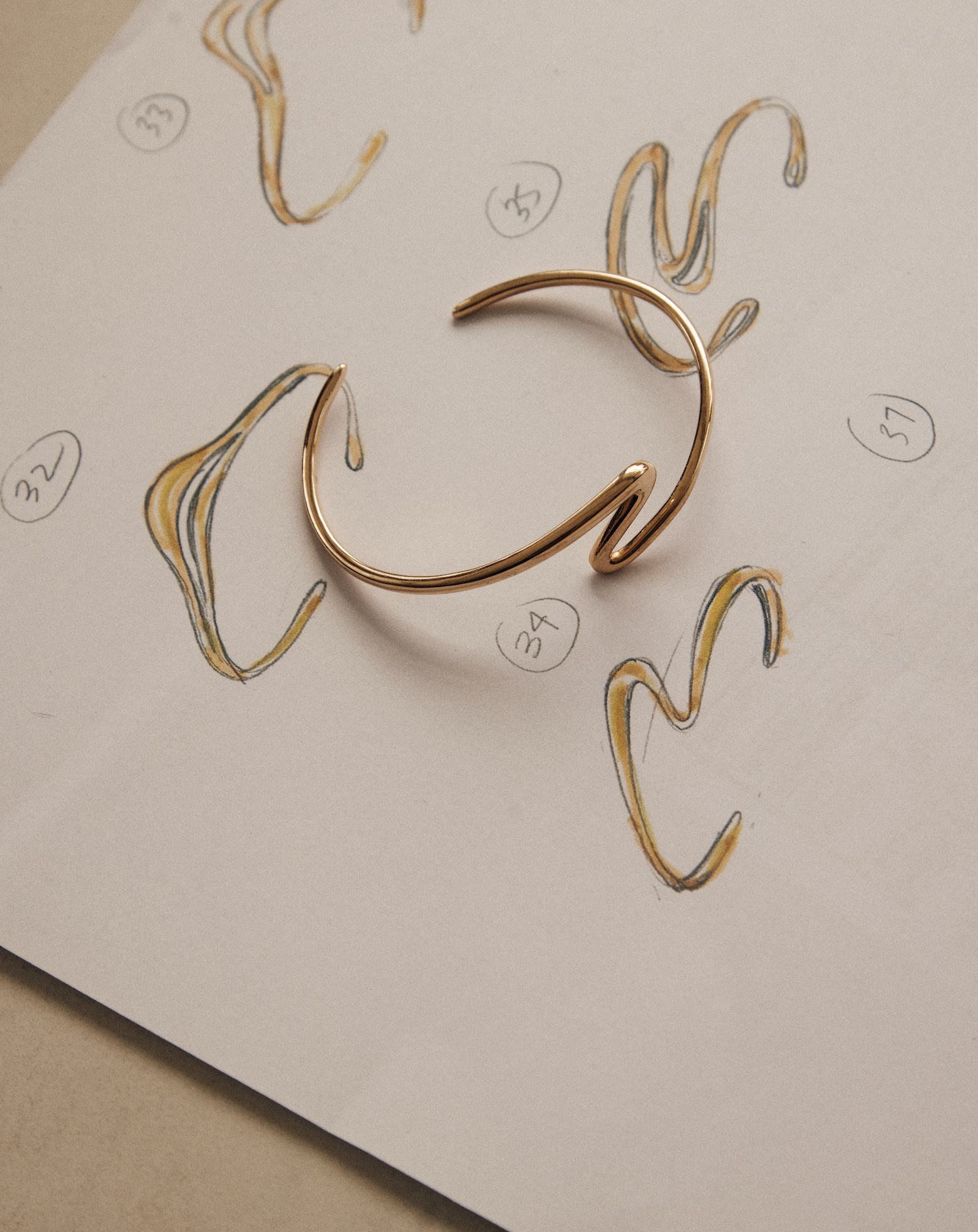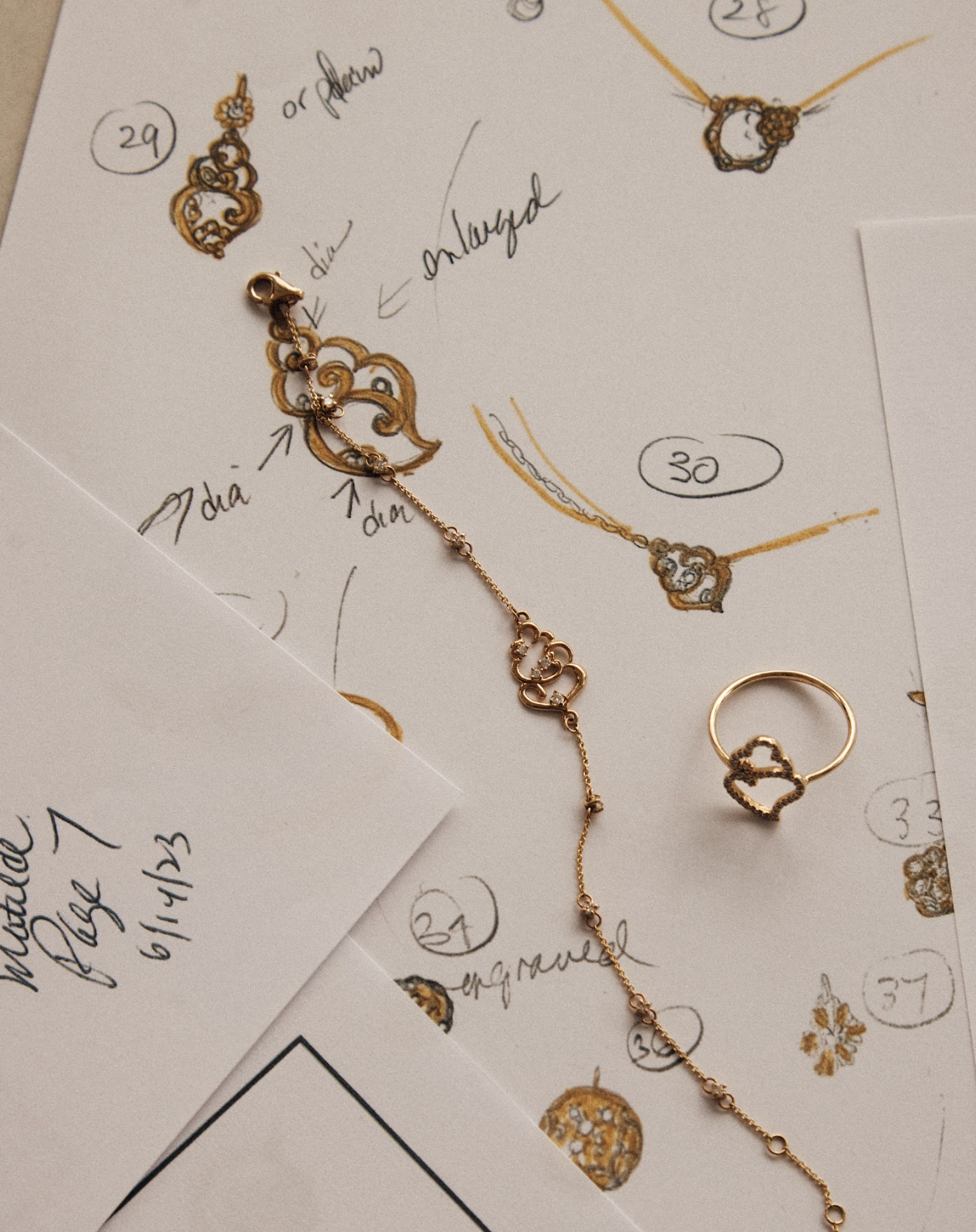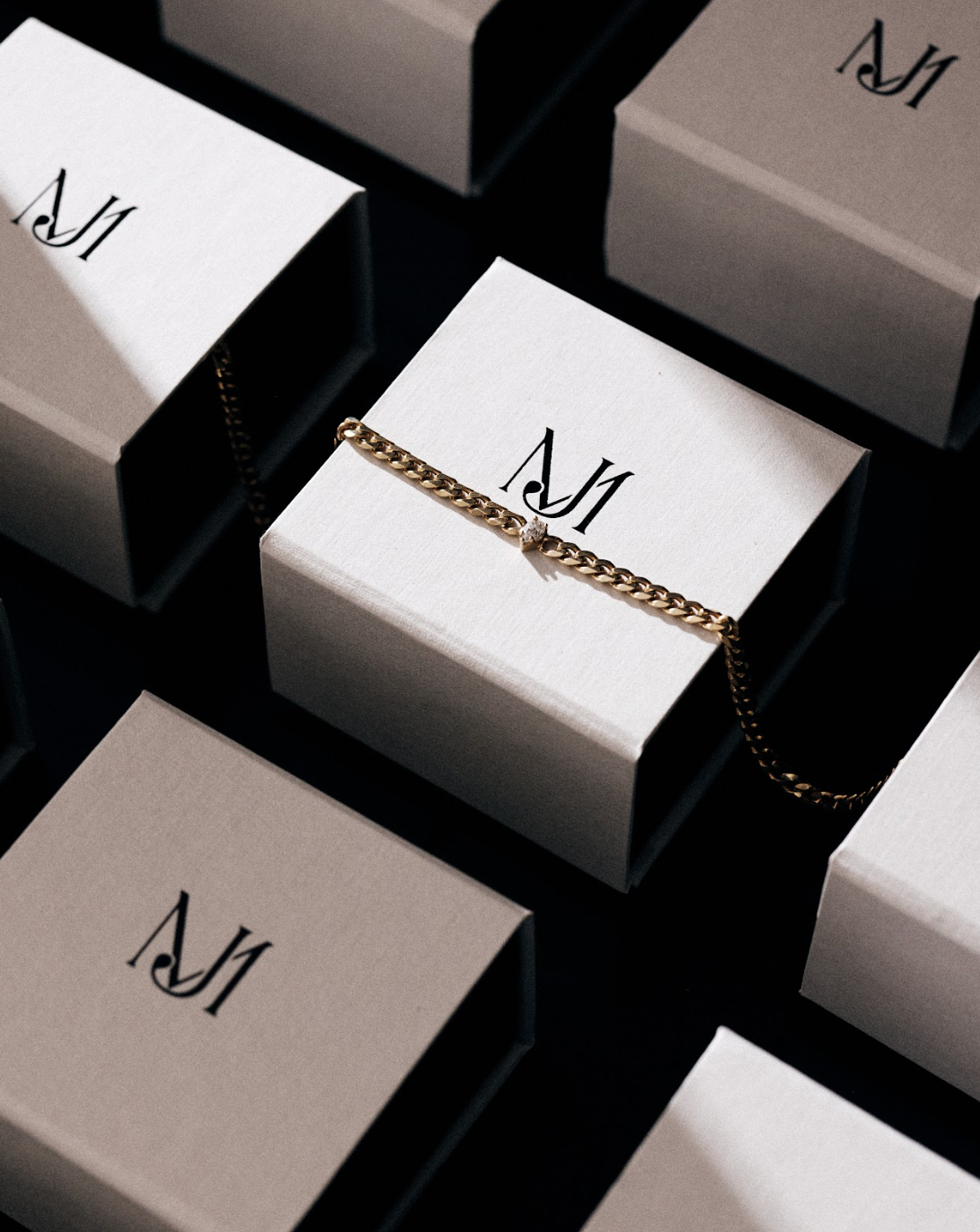What is recycled gold?
Recycled gold is created from consumer products like unwanted or broken jewellery, old coins, electrical scrap, and even old car parts. As a precious metal, gold does not degrade when it is melted down and reformed; this means it can be recycled over and over again without losing its integrity or its value. This means it can be in the form of all manner of things before being melted down and refined to be repurposed, making it one of the most recycled materials on this planet. Gold also does not tarnish, corrode or decay, so in this way, it is one of the most sustainable materials in existence.
How is gold recycled?
Recycled gold destined to become sustainable jewellery has to be processed into casting grain before it can be melted down again and poured into a jewellery mould.
To make the casting grain, any gold that was once used for industrial or electronic purposes is put through a chemical stripping procedure to remove impurities. These chemicals become inert during the process, leaving the gold in the same state it would have been in had it come straight from the ground. This procedure is also much less chemical-heavy than the amount needed to mine new gold.
The process is slightly different when recycling gold from a source like jewellery or coins, as they’re much less likely to have had impurities added along the way. In this instance, the gold is evaluated and sorted by quality, then melted at a high temperature, which serves to burn off any impurities that did make it into the original pieces.
How is recycled gold jewellery made?
Recycled gold jewellery is made by melting down recycled pure gold casting grain. Casting grain is the name for small grains or granules of gold that can easily and consistently be heated to melting point. Once melted, the recycled gold is poured into a mould in a process known as jewellery casting, where it soon cools and solidifies into its new shape. The properties of gold are so suited to this melting, moulding, solidifying process, that once the recycled gold comes out of its latest mould, you would never know it had ever been anything else.
Is recycled gold the same as gold?
Gold is an incredible metal for so many reasons; it’s beautiful and, unlike silver, it doesn’t tarnish. It’s soft enough to work with but hard enough to keep its shape. And from a sustainable point of view, gold’s true strength lies in its ability to keep its integrity no matter how many times it’s melted down and recast. A piece of recycled gold jewellery could have been anything in its previous incarnation – it could have come from the electronic components of a phone or laptop, a tooth or, of course, a different piece of jewellery, and you would never know. Once gold is melted down, it returns to a virgin state where it is physically, chemically and aesthetically exactly the same as gold that has just been mined and seen daylight for the very first time. There is no difference between new gold and recycled gold – other than an interesting history, and a better outcome for the planet.
Is recycled gold ethical and sustainable?
Recycled gold is ethical and sustainable; the process of recycling gold uses far fewer chemicals than mining, and it does so in a controlled fashion that avoids any negative environmental issues. And as gold can be recycled an infinite amount of times without losing its integrity, recycled gold is the ultimate sustainable metal.
What are the benefits of buying recycled gold compared to new gold?
The major benefit of buying recycled gold over new gold is undoubtedly that of ethics and sustainability. Recycled gold is no different to new, mined gold in any way other than environmentally, and that in itself is its draw.
Gold mining is one of the most environmentally destructive types of mining, and it sees millions of gold miners risking their lives and health in perilous working conditions in return for low wages. Aside from the more obvious risks inherent in going deep into the ground to mine, Industrial miners have to use cyanide as part of the process of extracting the gold. Highly toxic, cyanide is used to leach the gold from the crushed ore, and if it gets into the surrounding environment, it can do untold damage. It can contaminate drinking water, result in the death of aquatic life and damage soil.
Recycling gold avoids putting the miners in further danger, and avoids any chemical contamination of the environment.
Find out about the recycled gold in MATILDE Jewellery's sustainable collections








